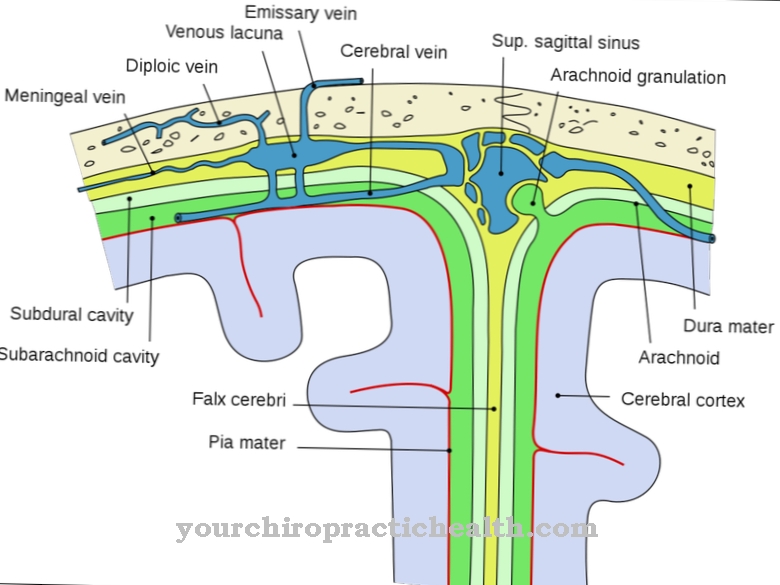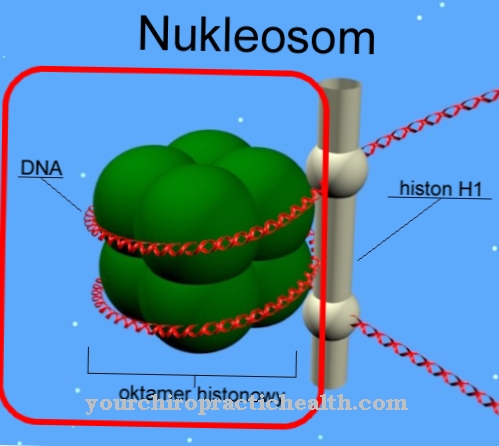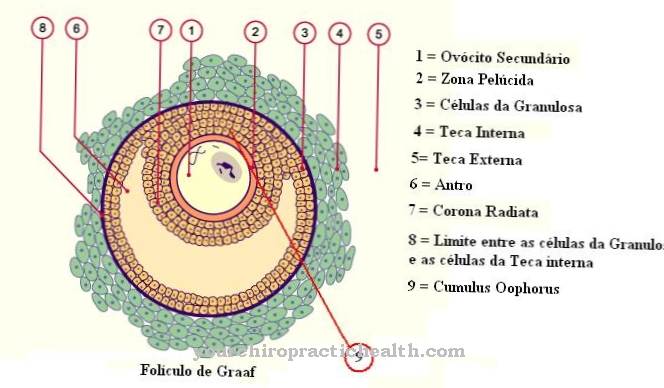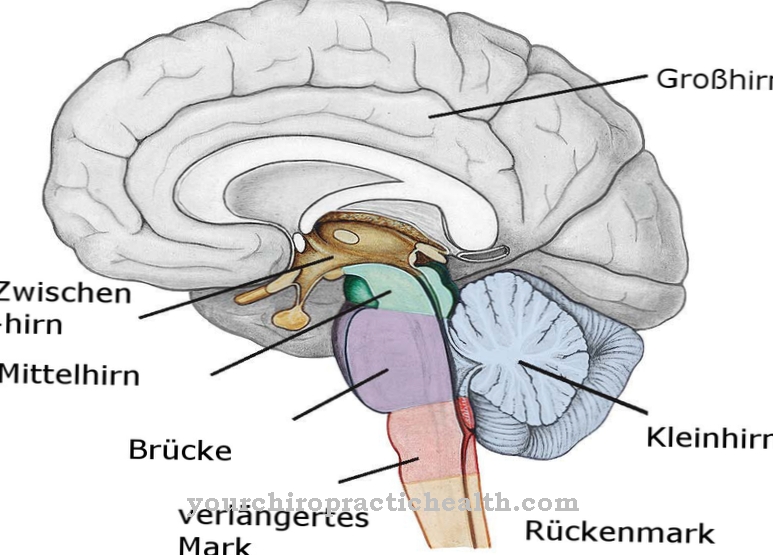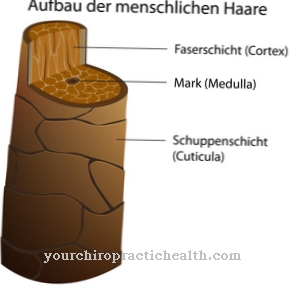The Cruciate ligaments are among the most important supporting ligaments in the knee joint. In addition to the inner and outer ligaments, the cruciate ligaments ensure stability in the joint. If the cruciate ligament is injured (cruciate ligament tear), joint stability is severely limited or no longer given.
What is the cruciate ligament?

The ligamenta cruciata genus - the cruciate ligaments - are part of the main apparatus of the knee joint. In addition to the inner ligament - the ligamentum collaterale tibiale - and the outer ligament - the ligamentum collaterale fibulare - the anterior and posterior cruciate ligament ensure the stability of the joint.
As the name suggests, the cruciate ligaments cross in the center of the knee joint. The main task is to maintain stability during joint movement.
Anatomy & structure
The anterior cruciate ligament lies between the tibia and the femur. The cruciate ligament runs from the front downwards or inwards. The direction of the anterior cruciate ligament is thus opposite to that of the posterior cruciate ligament.
The anterior cruciate ligament is supplied arterially via the genus media artery. The distribution of the blood vessels in the anterior cruciate ligament is not homogeneous. However, the center of the cruciate ligament is devoid of blood vessels. The posterior cruciate ligament also runs between the thighbone and the shinbone.
The posterior cruciate ligament, however, runs forwards and upwards or inwards and from back to downwards or outwards. The direction of the posterior cruciate ligament is thus opposite to the anterior cruciate ligament.
Function & tasks
The anterior and posterior cruciate ligaments are responsible for stabilization in the knee joint. Doctors assume that the cruciate ligaments are one of the most important factors responsible for a stable knee joint.
The ligaments cross in the middle of the course, which is why they have been given the name "cruciate ligament". The greatest stress is on the anterior cruciate ligament.
At the same time, it is one of the most stressed ligaments in the knee joint and is largely responsible for ensuring that the joint remains stable during movement.
The anterior cruciate ligament is also responsible for restricting rotation of the knee joint. The posterior cruciate ligament has the task of stabilizing the knee joint with the other ligaments during movement. The posterior cruciate ligament, in conjunction with the other ligaments in the knee joint, also ensures that the rotation of the joint is restricted.
Illnesses & ailments
If the knee is pulled over or forcibly bent when the thigh muscles are tensed, the anterior cruciate ligament will tear. Further injuries to the knee joint are possible with the tear in the anterior cruciate ligament.
Complex injuries often occur, such as damage to the medial meniscus as well as damage to the inner ligament. The doctor then speaks of an "unhappy triad" if all three factors (medial meniscus, medial ligament and anterior cruciate ligament) are injured. If the anterior cruciate ligament ruptures, the patient complains of a swollen bruise in the knee joint.
The knee can be pushed forward (the drawer effect), creating a feeling of instability (giving way). The patient also complains of pain and limitations in mobility. As a rule, the injured cruciate ligament is not sutured; rather, it will be replaced operationally. This surgical method leads to the best long-term results. In an anterior cruciate ligament surgery, a tendon is removed between the shin and the kneecap and shaped into a new anterior cruciate ligament.
The posterior cruciate ligament can also tear. Here, too, only if there is a direct force of force on the knee joint in the bent state. Hyperextension can also be responsible for tearing the posterior cruciate ligament. Statistically, however, the posterior cruciate ligament tears less than the anterior cruciate ligament. If the posterior cruciate ligament ruptures, the knee joint swells and causes pain to the patient. Many patients also complain of joint effusion.
In contrast to the tear of the anterior cruciate ligament, the knee joint shifts backwards. The person is also restricted in his mobility. It is no longer possible to stretch the knee joint. However, a complex injury rarely or never occurs. Surgery is rarely performed when the posterior cruciate ligament ruptures. As a rule, this is only carried out for active and young people. Here, too, the cruciate ligament is replaced by a tendon from the kneecap. The operation is rarely used, however, because with proper treatment and splinting, the posterior cruciate ligament itself heals.
Sprains or gentle tears in the cruciate ligament are also possible and are considered protracted injuries. An injury to the cruciate ligament (especially the anterior ligament) is serious and can sometimes cause long-term damage (the patient can no longer bend or straighten the knee 100%); Long physical therapies are therefore indispensable and necessary after operations.

